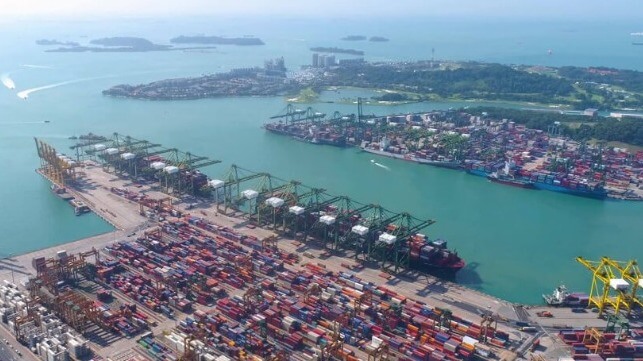Singapore, Los Angeles, and Long Beach Agree to Green Corridor

The ports of Singapore, Los Angeles, and Long Beach became the latest to join the growing list of port authorities committing to the formation of green corridors in the support of the UN initiative and the efforts to achieve global decarbonization. The latest trilateral agreement was announced as Singapore, which views itself as a global maritime hub and at the forefront of maritime initiatives, kicked off its Singapore Maritime Week, an annual gathering of the international maritime community.
At last year’s event, Singapore Minister of Transport S. Iswaran announced that Singapore would join the Clydebank Declaration for Green Shipping Corridors launched at the UN’s COP 26 conference in 2021. This was followed by an agreement in August 2022 to launch the world’s longest green corridor between Singapore and Rotterdam.
The ports of Singapore, Long Beach, and Los Angeles, supported by C40 Cities, a global intercity partnership, began discussions to establish a green and digital shipping corridor in November 2022. Today in Singapore at the start of Maritime Week, the Maritime and Port Authority of Singapore (MPA), Port of Los Angeles, and Port of Long Beach, with C40 Cities, signed a memorandum of understanding to establish a green and digital shipping corridor between Singapore and the San Pedro Bay ports complex to support the decarbonization of the maritime industry and improve efficiencies through digitalization.
“No single port or organization can tackle the challenge of decarbonizing the supply chain alone, no matter how innovative their technology or robust their efforts,” said the Port of Los Angeles’ Executive Director Gene Seroka. “The establishment of this green shipping corridor between the San Pedro Bay Port Complex and Singapore will prove to be a living, breathing testament to the power of global collaboration.”
Under the terms of the agreement, the three ports committed to facilitating the supply and adoption of low- and zero-emission fuels and exploring the necessary infrastructure and regulations for bunkering. In addition to identifying and collaborating on pilot and demonstration projects, the memorandum aims to identify digital shipping solutions and develop standards and best practices for green ports and the bunkering of alternative marine fuels, including sharing experiences at international platforms such as IMO.
“The signing of this MOU signals our collective will to pool our resources, technical insights, industry, and research networks to deliver scalable green as well as digital corridor solutions to help the maritime industry attain the 2050 emission reduction targets expected of the International Maritime Organization and help spur the development of green growth opportunities,” said Teo Eng Dih, Chief Executive of MPA.
Los Angeles was among the first global port to announce their participation in the green corridor initiative. Months after the adoption of the plan at the climate conference, Los Angeles and Shanghai announced the first green corridor agreement. Other ports have joined in the initiative as well as regional efforts such as ports in the North Sea and Baltic region and the Pacific Northwest and Alaska. The agreements are seen as a tool to accelerate the decarbonization of the maritime industry and support the critical development of supply, infrastructure, and bunkering required for the transition. Planning is proceeding but no timing has yet been announced for the start of the first green corridor.
